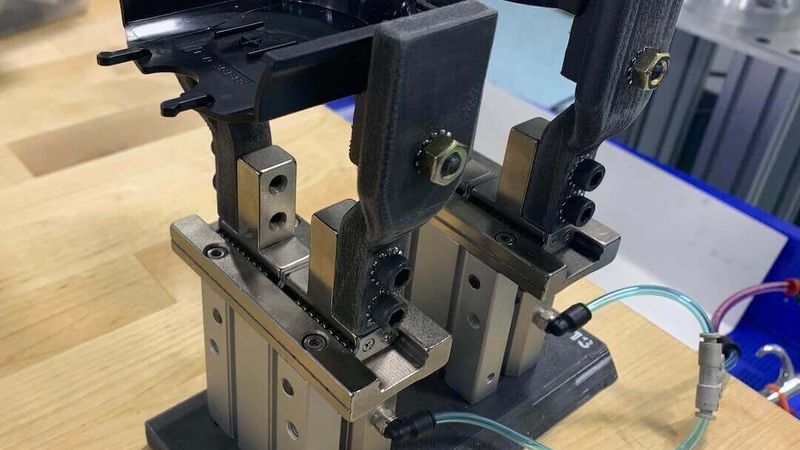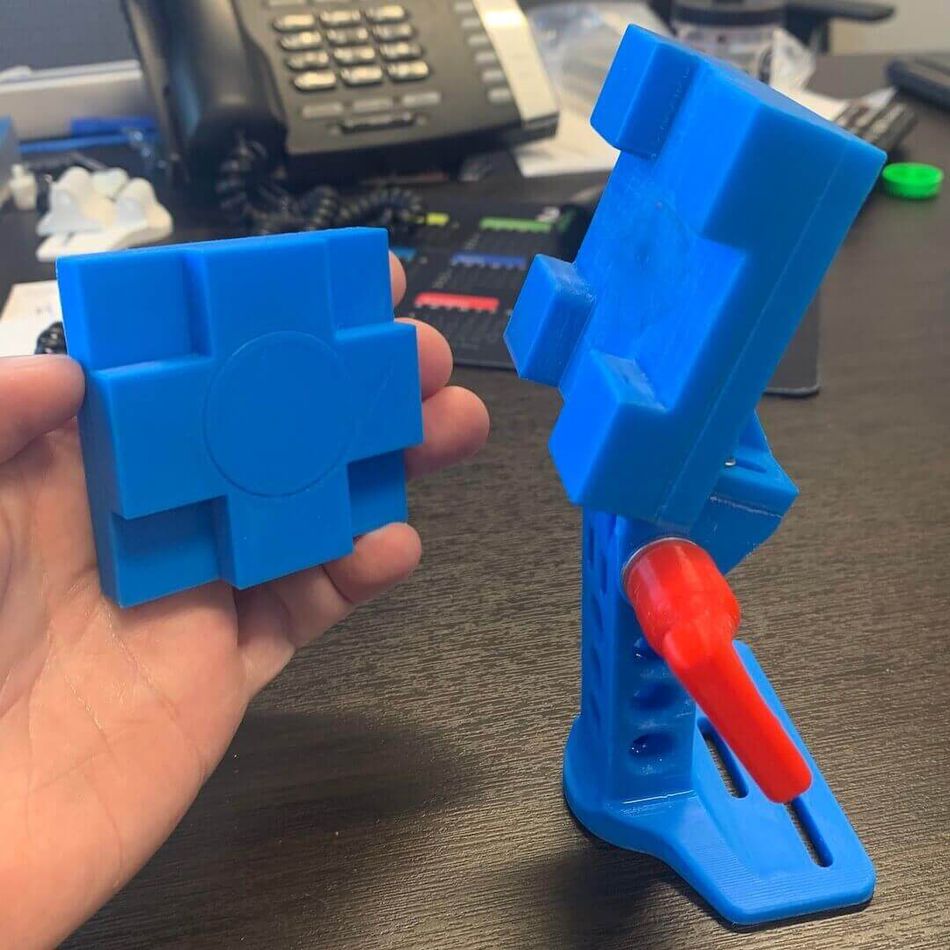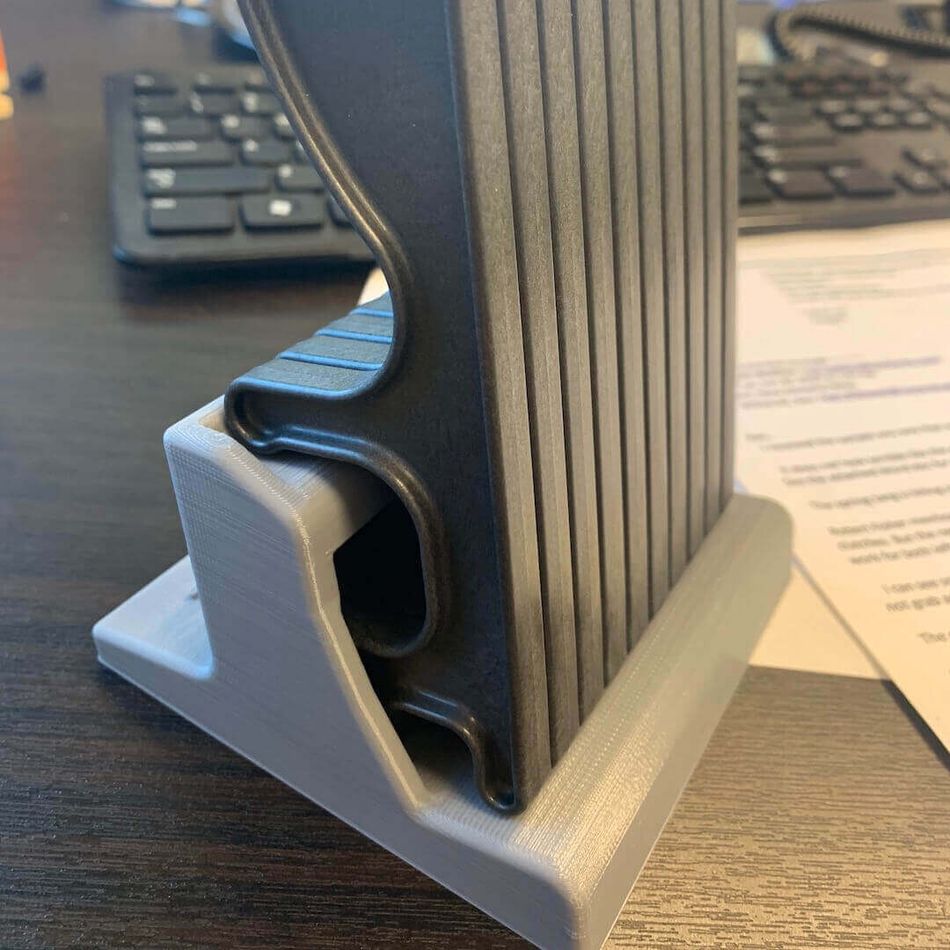Fast turnaround end-of arm tooling solutions with advanced 3D printing
Injection molding company Metro Plastics used 3D printing solutions from UltiMaker to solve long lead time issues on their shop floor.
Introduction
Metro Plastics, a specialized firm in custom injection molding, has significantly enhanced its operational efficiency by integrating the Ultimaker S5 Pro Bundle into its manufacturing processes. Spearheaded by Scott Adams, the Engineering Manager with a 14-year tenure at the company, Metro Plastics has not only reduced lead times but also achieved substantial cost savings. This article delves into the technical aspects of how 3D printing technology has revolutionized Metro Plastics' workflow.
The Genesis: Tackling Operational Delays
Initially, Metro Plastics faced considerable challenges in obtaining end-of-arm tooling components from their in-house tool shop. The lead times varied dramatically, ranging from a week to several months, depending on the workload of the tool shop. Recognizing the inefficiency, Adams began exploring additive manufacturing technologies as a potential solution.
The Decision-Making Process
After consulting with Matt Torosian, Director of Jabil's Additive Manufacturing Materials division, Adams was introduced to Ultimaker's range of 3D printers. The Ultimaker S5 Pro Bundle was selected for its large build plate, superior air quality management, and flexibility to switch between a wide array of materials through its open material platform.
Rapid Implementation and Skill Adaptation
Upon the arrival of the Ultimaker S5 Pro Bundle, the engineering team at Metro Plastics quickly adapted to the new technology. Leveraging their existing 3D CAD skills, they mastered the Ultimaker Cura software and commenced printing components on the same day the printer was set up.
The Revolution of End-of-Arm Tooling (EOAT) through 3D Printing
EOAT parts enable machines to complete specialized tasks such as picking, placing, sorting, and assembling. As industries evolve, there is an increasing need for custom and adaptable EOAT solutions. This is where 3D printing steps in, reshaping how EOAT is conceptualized, produced, and implemented.
Traditional Challenges in EOAT Production
- Customization Constraints: Traditional manufacturing methods often come with design restrictions, making it challenging to produce unique or complex EOAT designs tailored to specific tasks.
- Lead Time: As highlighted by Metro Plastics' experience, obtaining specialized tooling parts can sometimes take weeks or even months, creating delays in the production line.
- Costs: Bespoke tooling parts are often expensive, primarily when produced in small quantities using conventional manufacturing techniques.
3D Printing: The Game-Changer for EOAT
- Rapid Prototyping: 3D printing allows manufacturers to swiftly move from a design concept to a physical prototype. This ability to quickly iterate designs means that EOAT can be optimized for performance with fewer delays.
- Customization: With 3D printing, the complexities and intricacies of design are not a hurdle. EOAT can be tailored precisely to the requirements of a task, ensuring better functionality and efficiency.
- Weight Reduction: 3D printed parts can be designed to be lightweight without sacrificing strength, especially when using materials like carbon-fiber filled nylon. Lighter EOAT can lead to faster robotic movements and less wear and tear on the robotic system.
- Cost-Efficiency: 3D printing can be more cost-effective for producing specialized parts in small to medium quantities, reducing the overheads associated with mold creation and material wastage in traditional manufacturing.
Beyond Initial Expectations: Versatile Applications
Initially, Metro Plastic had envisioned using the 3D printer solely for end-of-arm tooling. However, the team soon discovered a plethora of other applications, including:
- General and assembly fixtures
- CMM (Coordinate Measuring Machine) components
- Equipment casings and brackets
- Prototypes for both internal design and customer requirements
- Financial and Operational Benefits
The integration of 3D printing has led to remarkable cost efficiencies. For instance, sensor brackets, which would typically cost between $40 to $50 and take days to arrive, can now be printed in-house for just $5 per part. Moreover, the production department now consults the engineering team for 3D printing possibilities before considering outsourcing or purchasing from catalogs.
This proves that 3D printing is not only making impact on industrial-grade manufacturing outcomes but can positively impact through the shop floor. Fast, affordable and highly-customized solutions for an array of challenges are now solvable by in-house teams.
Conclusion
Metro Plastics has successfully leveraged the Ultimaker S5 Pro Bundle to optimize its operations, achieving up to 90% cost reduction in certain components and significantly reducing lead times. The technology has not only solved immediate operational bottlenecks but has also opened doors to various other applications, making it an invaluable asset for the company.
To learn more about the impact of 3D printing on the manufacturing industry, read the other articles in our series. A deep-dive into how 3D printing is enabling faster design, higher productivity, and more customization in manufacturing and another case study about how Zeiss is Using 3D Printed Parts in Serial Production.
Future articles will examine the impact of 3D printing on packaging, STEM, and transportation.



